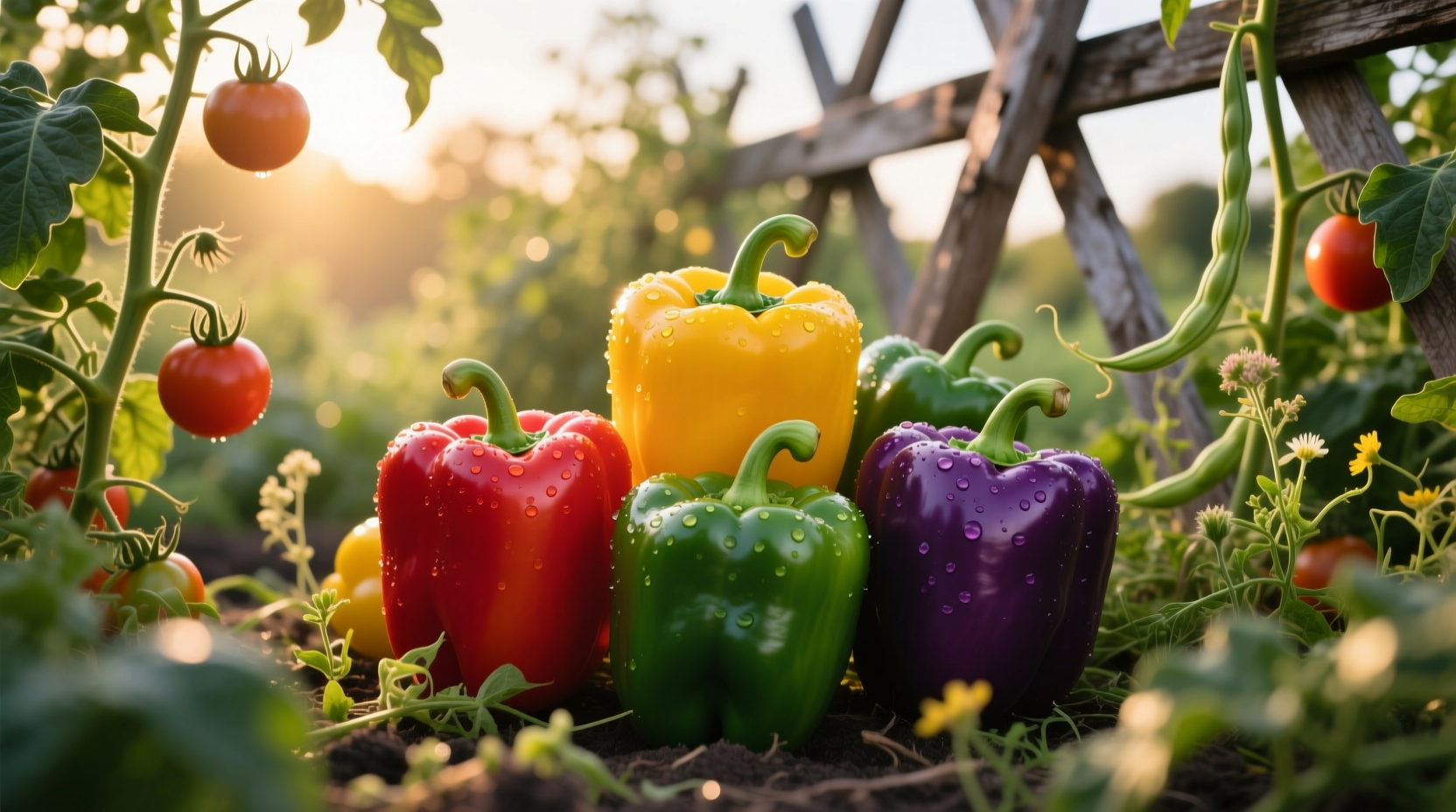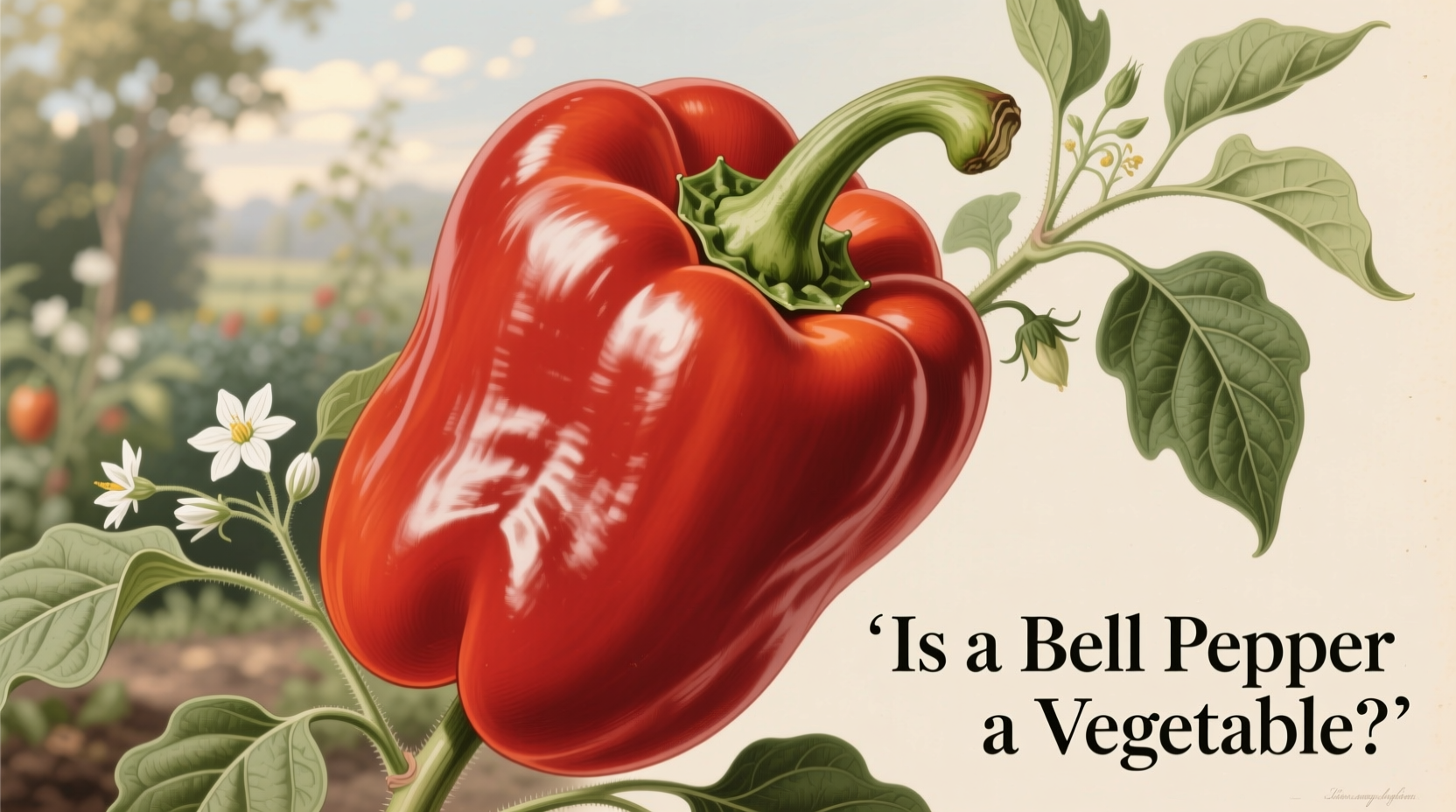Yes, bell peppers are botanically classified as fruits but culinarily treated as vegetables. This dual classification explains the common confusion about whether bell peppers are fruits or vegetables.
Ever wondered why bell peppers appear in the vegetable section of your grocery store despite being technically fruits? You're not alone. This botanical paradox affects millions of home cooks and nutrition enthusiasts who want clear answers about their food. Understanding this classification isn't just academic—it impacts how you cook, shop, and even how you think about nutrition. Let's clear up the confusion once and for all with definitive scientific and culinary insights.
The Botanical Truth: Bell Peppers Are Fruits
From a strict botanical perspective, bell peppers (Capsicum annuum) are unequivocally fruits. In plant biology, a fruit develops from the ovary of a flowering plant and contains seeds. Bell peppers perfectly fit this definition—they form from the flower of the pepper plant and house numerous seeds inside their cavity. This same botanical classification applies to tomatoes, cucumbers, and eggplants, all of which share the same fruit status despite their culinary treatment as vegetables.
The United States Department of Agriculture (USDA) confirms this classification in their official plant database, listing bell peppers under the fruit category for botanical purposes. This scientific reality often surprises people who've only encountered bell peppers in savory dishes and vegetable-based recipes.
| Classification Type | Category for Bell Peppers | Defining Characteristics |
|---|---|---|
| Botanical | Fruit | Develops from flower ovary, contains seeds |
| Culinary | Vegetable | Savory flavor profile, used in main dishes |
| Nutritional | Vegetable | Low sugar content, high in vitamins A and C |
| Legal (Nix v. Hedden) | Vegetable | Used in same way as vegetables in meals |
Why We Treat Bell Peppers as Vegetables
The culinary world operates by different rules than botany. Chefs and home cooks classify ingredients based on flavor profile and usage rather than scientific taxonomy. Bell peppers have a low sugar content (only about 4-6 grams per 100g) compared to sweet fruits like apples (10-19g per 100g), and their savory, sometimes slightly bitter flavor makes them perfect for savory dishes rather than desserts.
This culinary classification was cemented in American law by the 1893 Supreme Court case Nix v. Hedden, where the court ruled that tomatoes (and by extension, other similar produce including bell peppers) should be classified as vegetables for tariff purposes. The justices determined that "vegetables, which are grown in kitchen gardens, and are usually served at dinner in, with, or after the soup, fish, or meats which constitute the principal part of the repast, are not fruits." This legal precedent continues to influence how we categorize bell peppers today.

Historical Evolution of Classification
The classification confusion isn't new—it has evolved alongside our understanding of botany and culinary traditions:
- Pre-18th century: Botanical and culinary classifications were largely indistinguishable; plants were categorized by use rather than scientific structure
- 1753: Carl Linnaeus established the modern botanical classification system, creating the scientific framework that identifies bell peppers as fruits
- 1893: The Nix v. Hedden Supreme Court case legally classified tomatoes (and similar produce) as vegetables for tariff purposes
- 20th century: Nutrition science further separated the categories, with dietary guidelines grouping bell peppers with vegetables due to their nutrient profile
- Present day: Dual classification persists, with scientific communities recognizing the botanical truth while culinary and nutritional fields maintain the vegetable classification
When Classification Matters (and When It Doesn't)
Understanding whether bell peppers are fruits or vegetables becomes important in specific contexts:
- Gardening: When planning crop rotation, bell peppers should be grouped with other nightshades (tomatoes, eggplants) rather than with root vegetables
- Nutrition: The USDA's MyPlate guidelines categorize bell peppers with vegetables, affecting dietary recommendations and meal planning
- Cooking: Their vegetable classification informs proper pairing with other ingredients—bell peppers complement savory dishes rather than sweet preparations
- Food Science: Understanding their fruit nature explains why bell peppers can ripen after harvest and why they shouldn't be stored with ethylene-producing fruits
For most home cooking purposes, however, the classification matters less than understanding bell peppers' flavor profile and culinary properties. Whether you call them fruits or vegetables, their vibrant colors, crisp texture, and nutritional benefits remain the same.
Practical Implications for Your Kitchen
Knowing bell peppers' dual classification can actually improve your cooking:
- Storage: Store bell peppers in the crisper drawer of your refrigerator (like vegetables), not on the counter (like many fruits)
- Ripening: Unlike most vegetables, bell peppers can continue ripening after harvest—place them near bananas to speed up the process from green to red
- Cooking: Their vegetable classification means they pair well with other savory ingredients; their fruit nature explains why red bell peppers taste sweeter than green ones
- Nutrition: Red bell peppers contain nearly 9 times more beta-carotene and 1.5 times more vitamin C than green varieties, making them nutritional powerhouses regardless of classification
According to data from the National Institutes of Health, a single medium red bell pepper provides 169% of your daily vitamin C needs and 19% of vitamin A—nutritional benefits that firmly place them in the vegetable category for dietary purposes, regardless of their botanical classification.
Common Misconceptions Clarified
Several myths persist about bell peppers' classification:
- Myth: "Bell peppers are vegetables because they don't taste sweet." Reality: Sweetness isn't the botanical determinant—many fruits like olives and avocados are savory
- Myth: "All peppers are fruits, so jalapeños and chili peppers must be vegetables." Reality: All true peppers (Capsicum species) are botanically fruits, regardless of heat level
- Myth: "The color determines whether it's a fruit or vegetable." Reality: Color indicates ripeness stage, not classification—green, yellow, orange, and red bell peppers are all the same fruit at different maturity levels
Understanding these distinctions helps you make more informed choices in the kitchen and at the grocery store, whether you're following a recipe, planning meals, or simply satisfying your curiosity about everyday foods.











 浙公网安备
33010002000092号
浙公网安备
33010002000092号 浙B2-20120091-4
浙B2-20120091-4